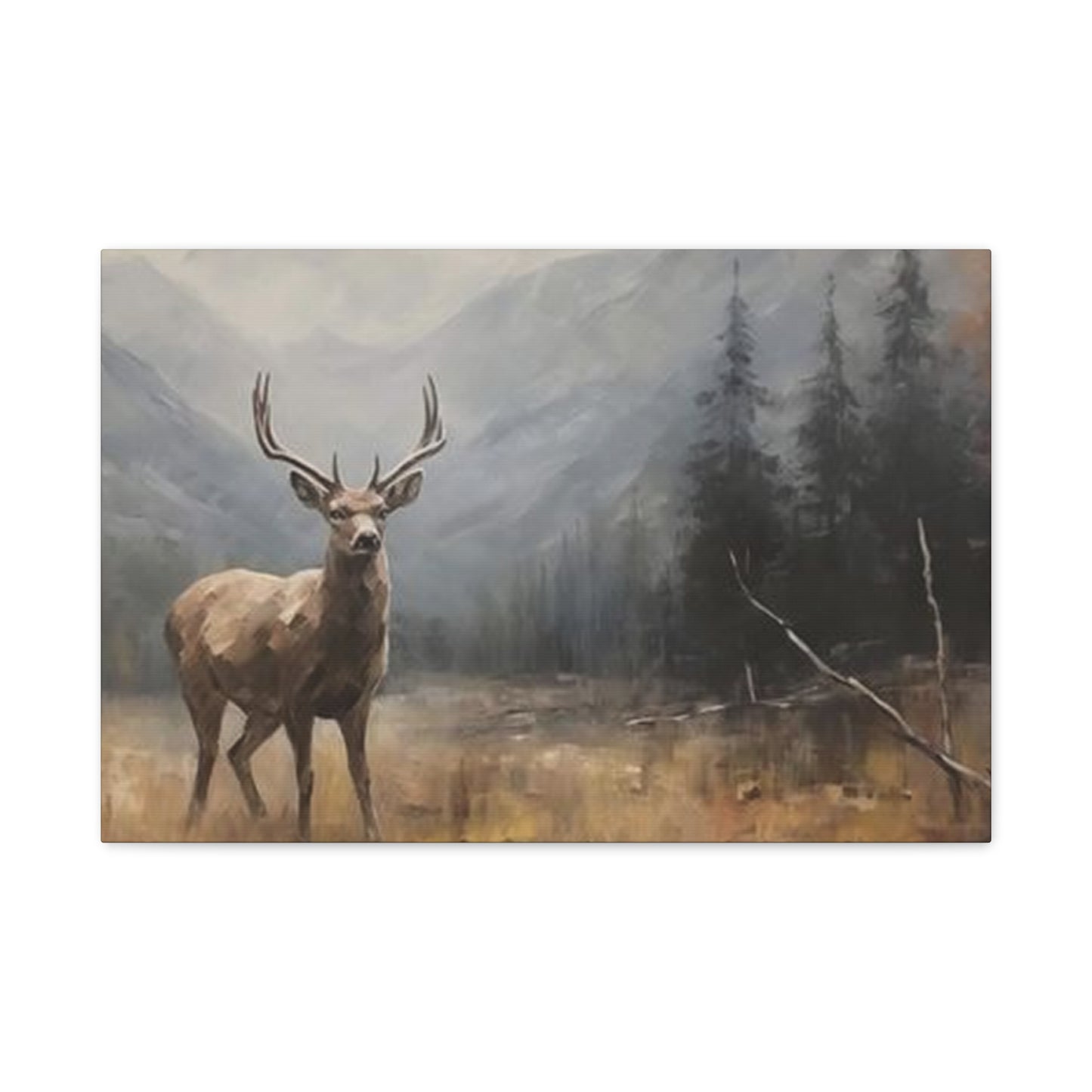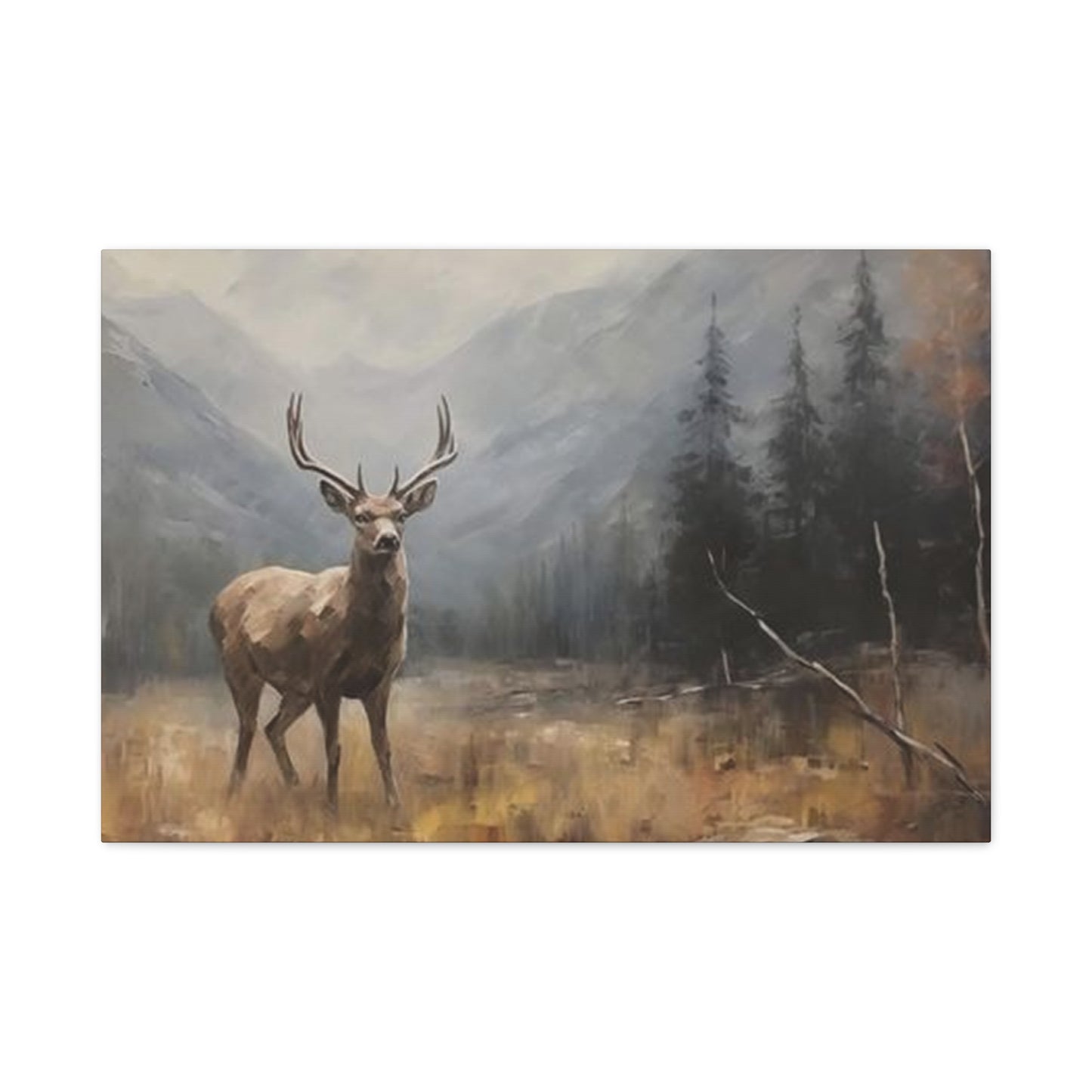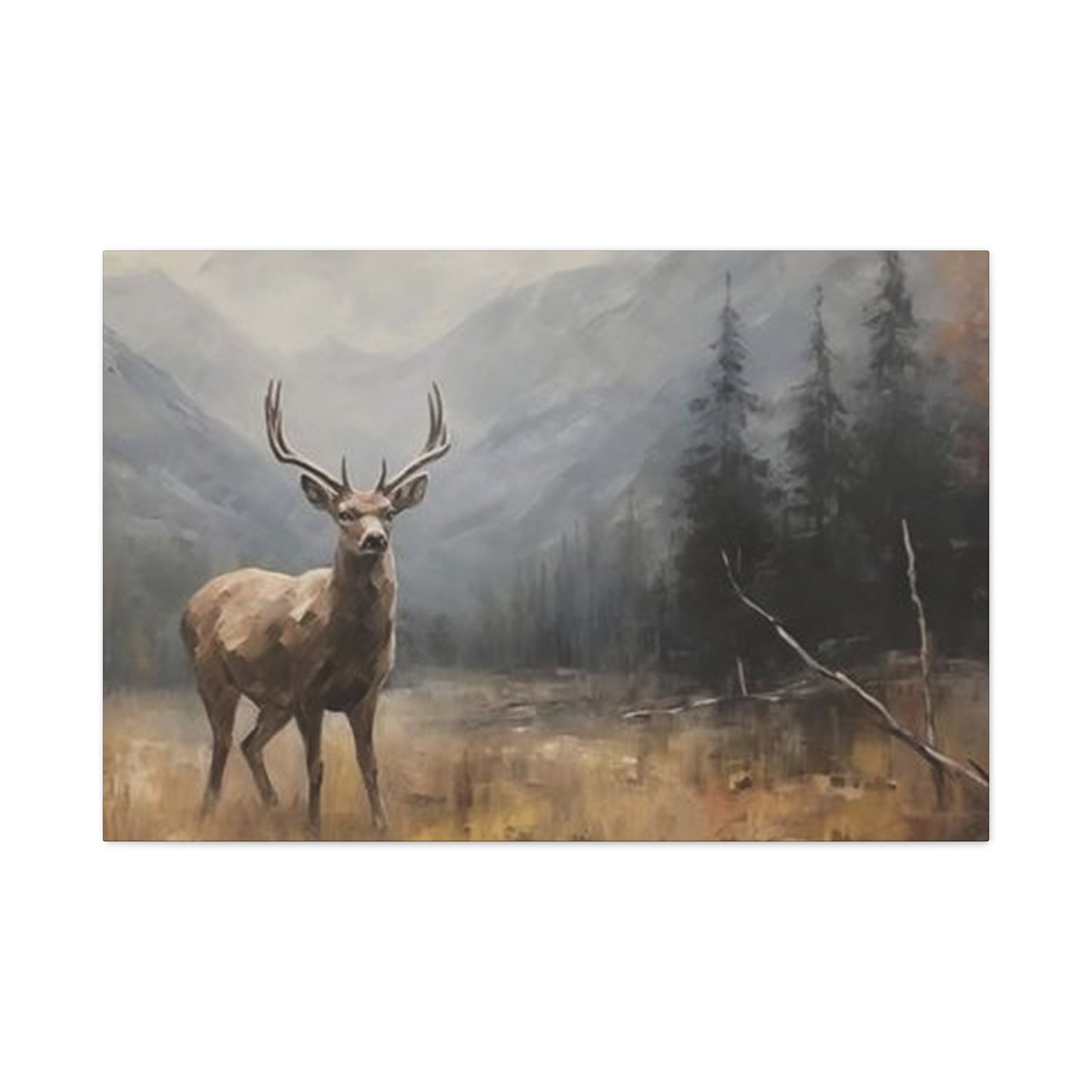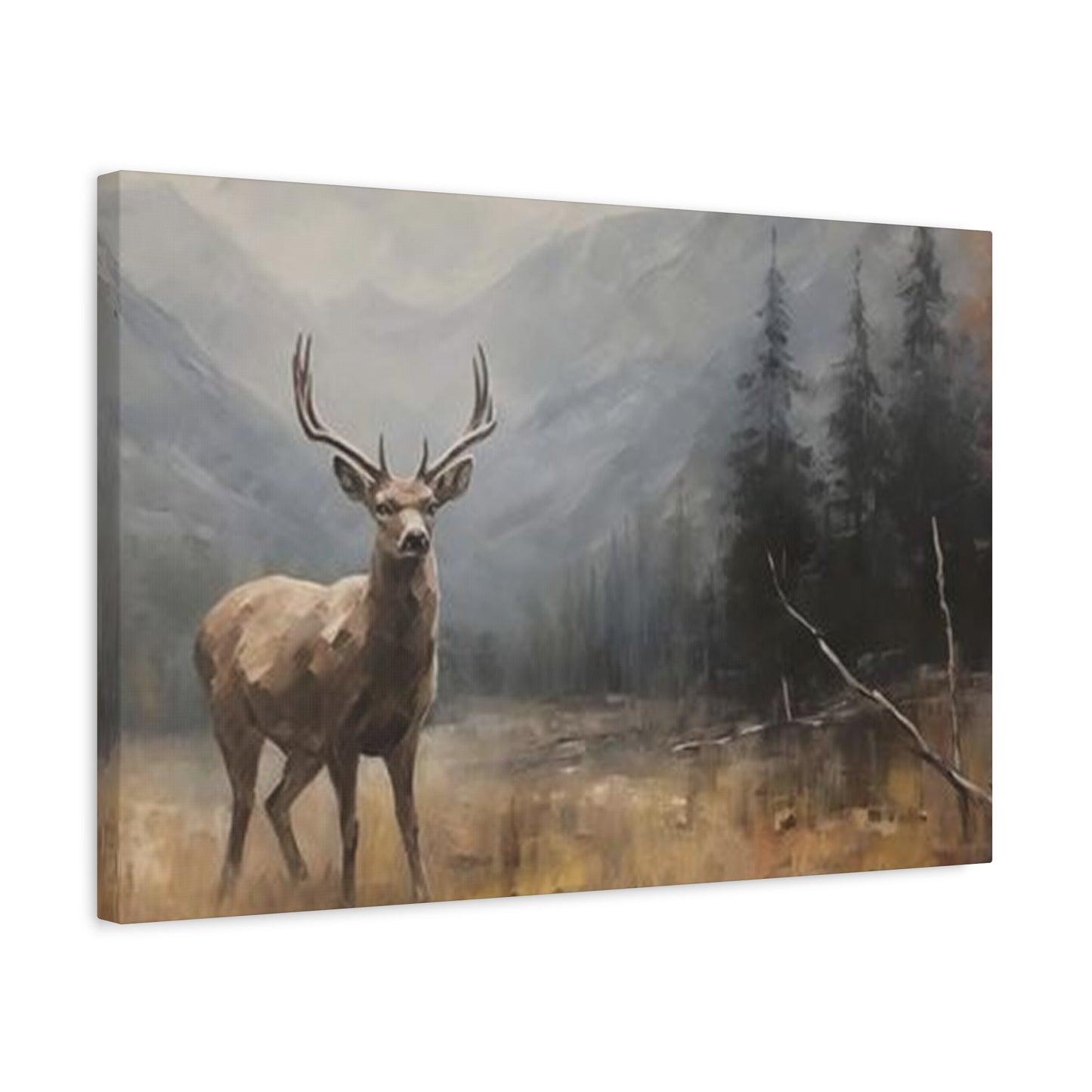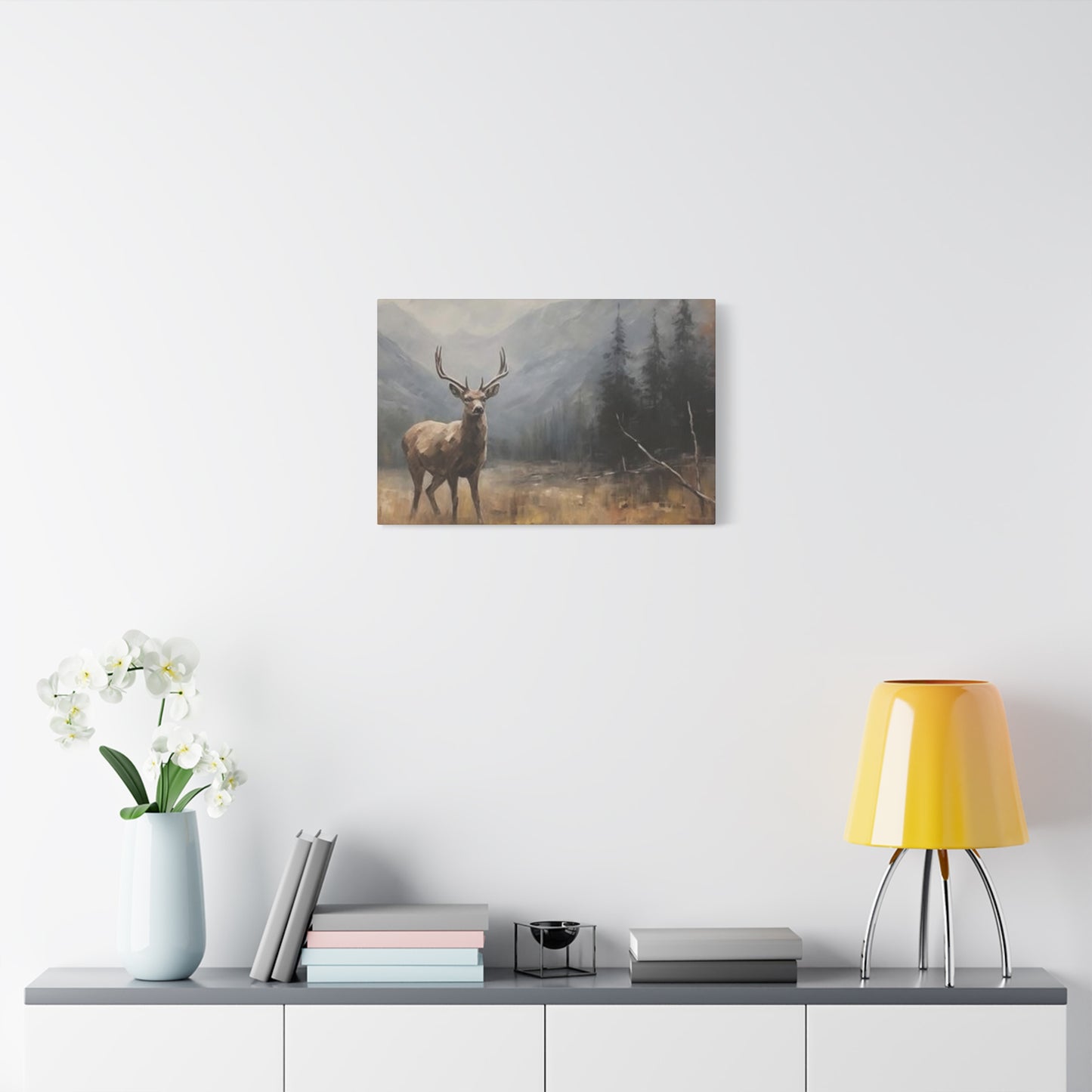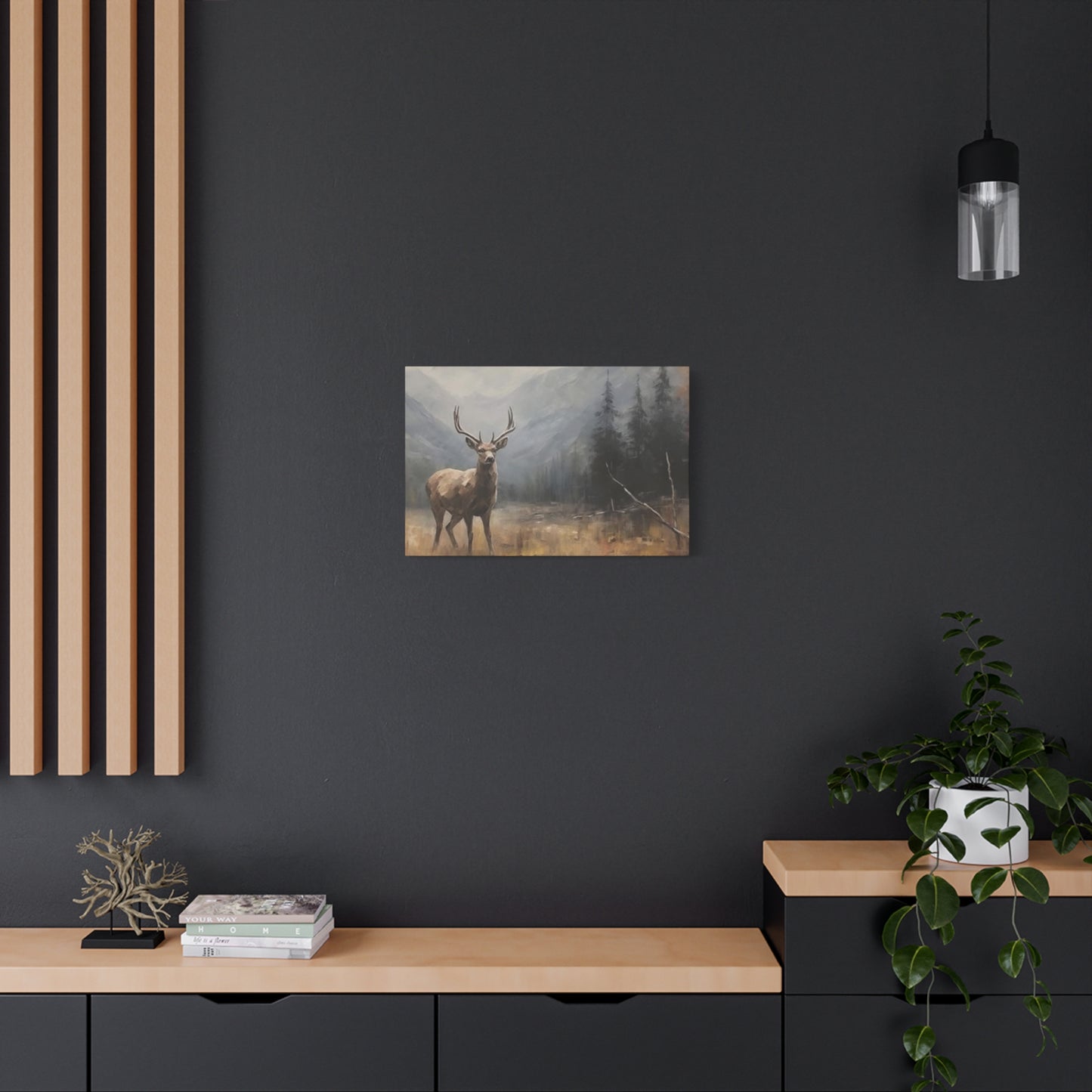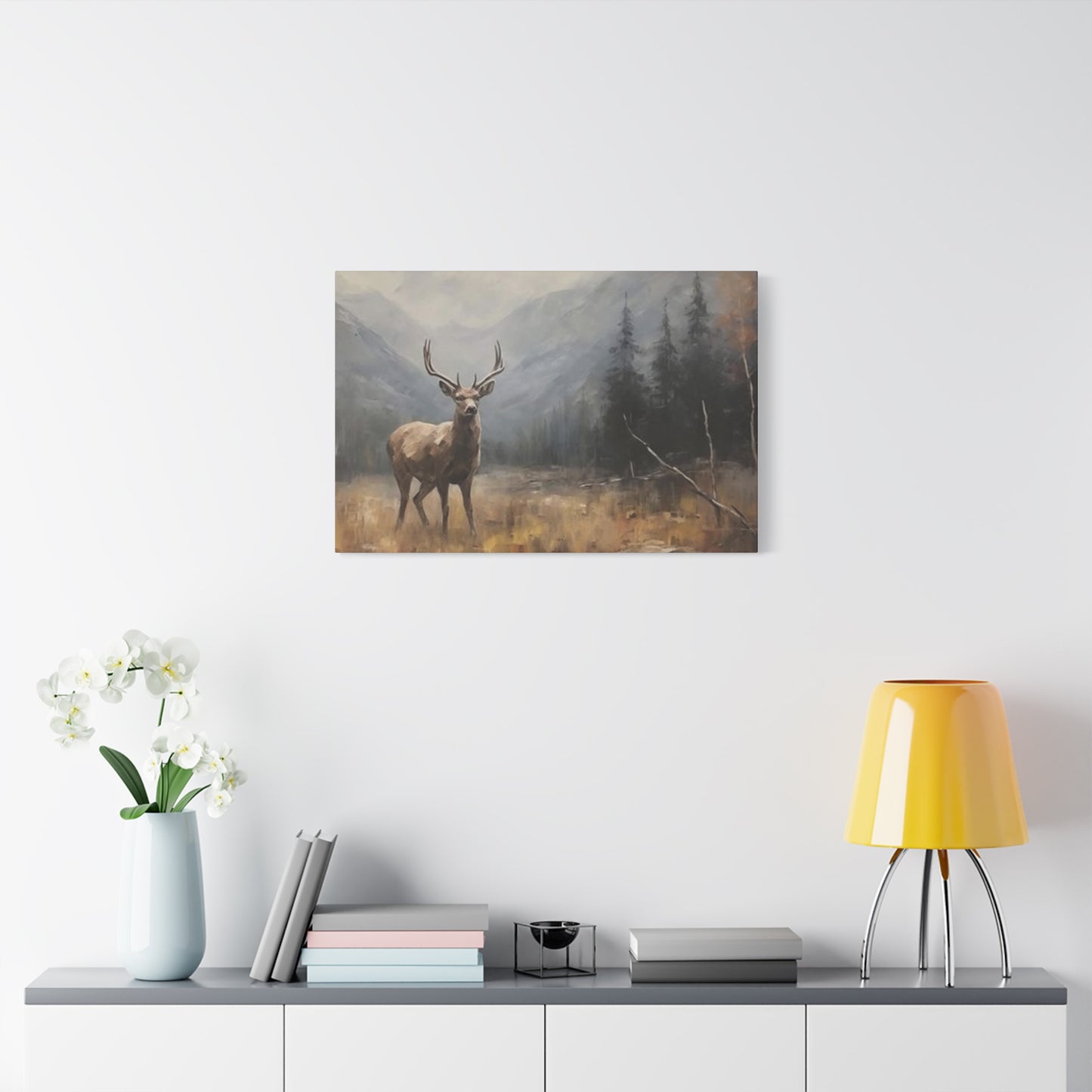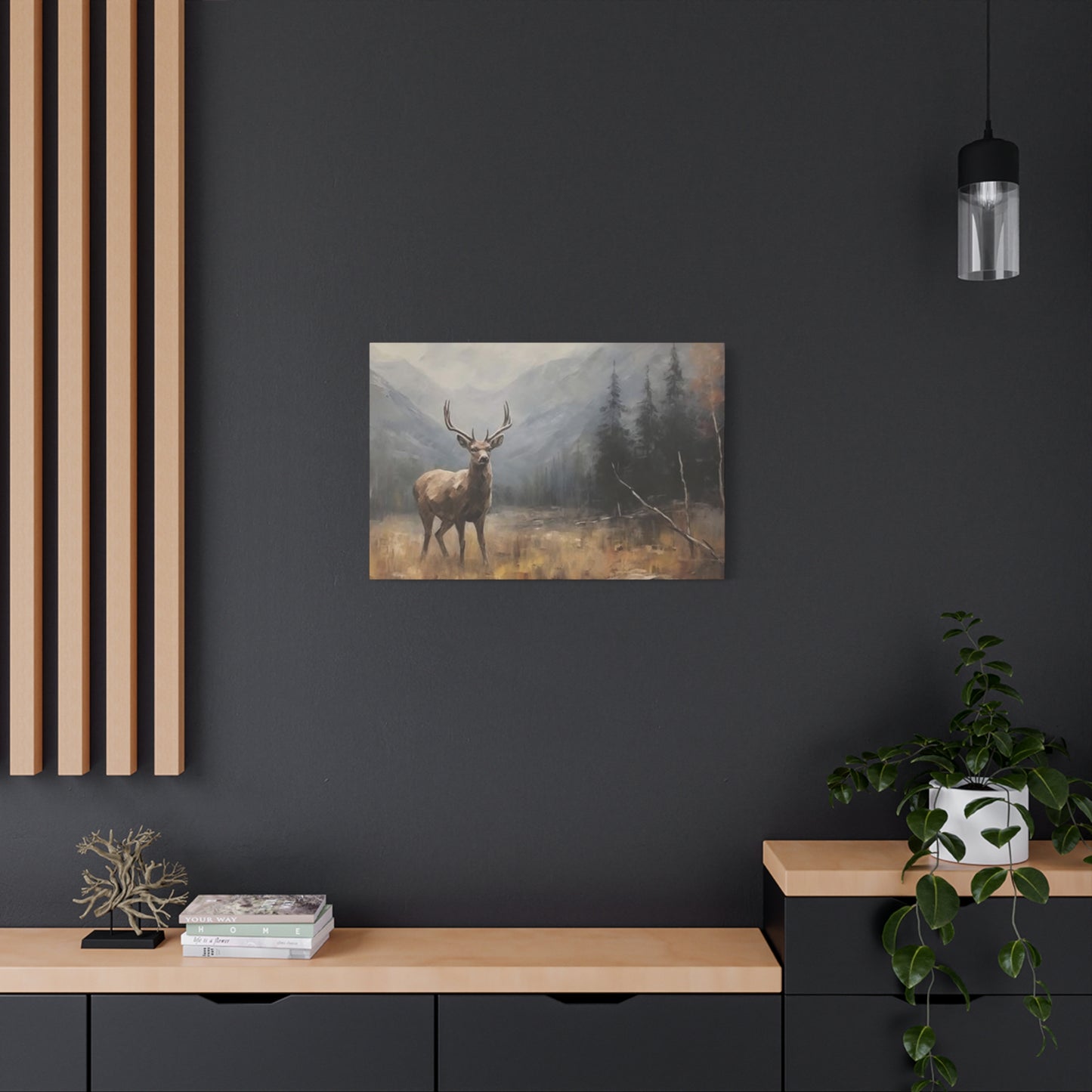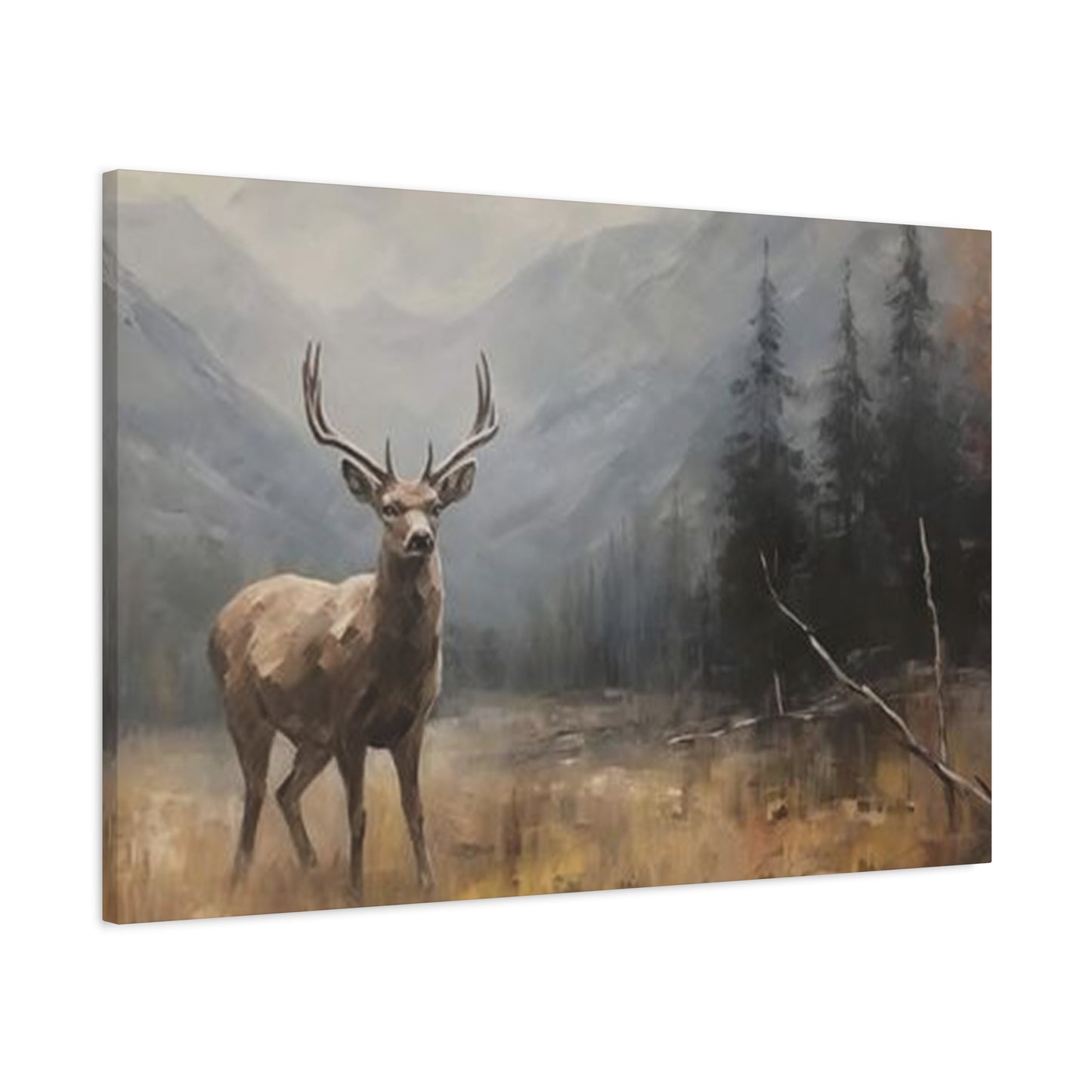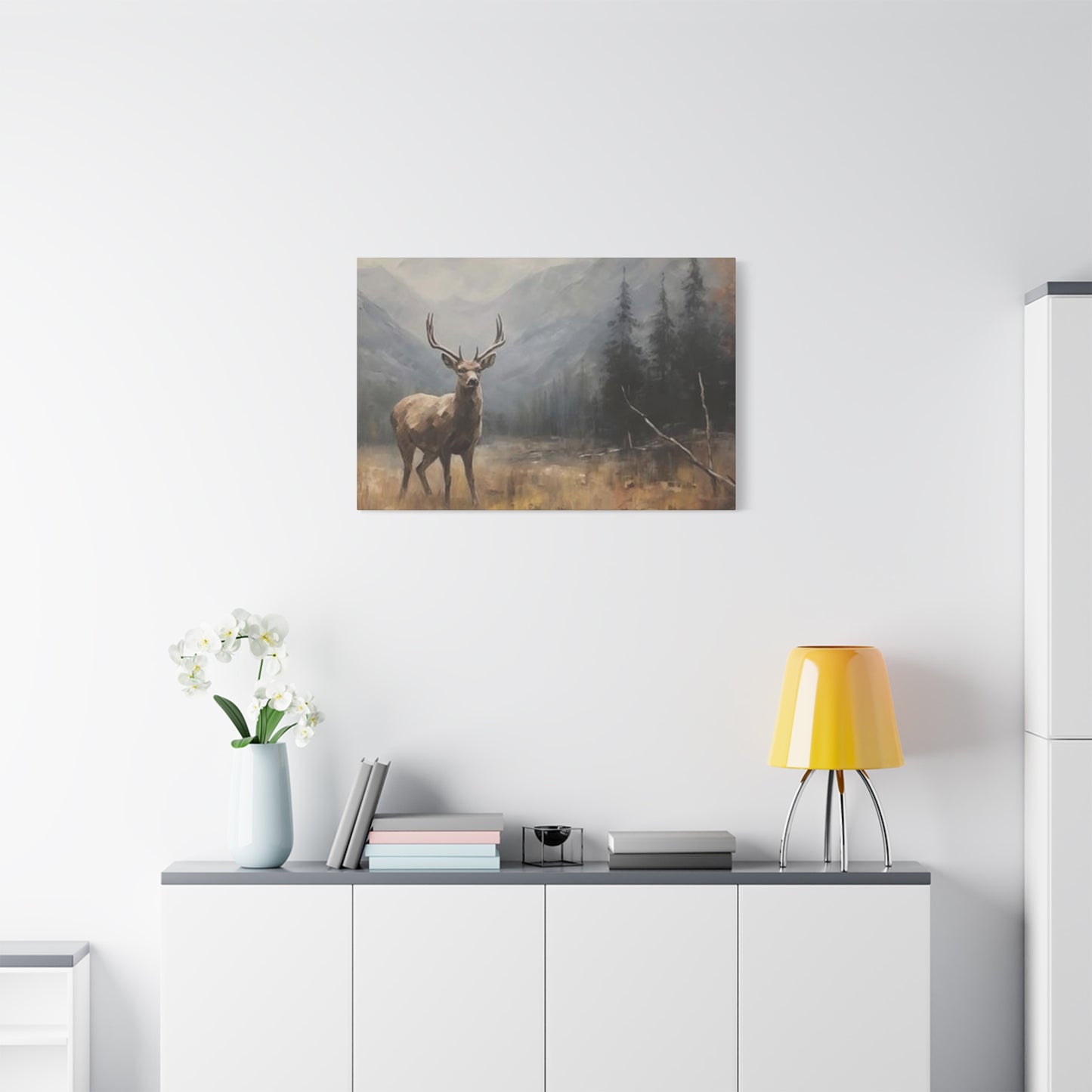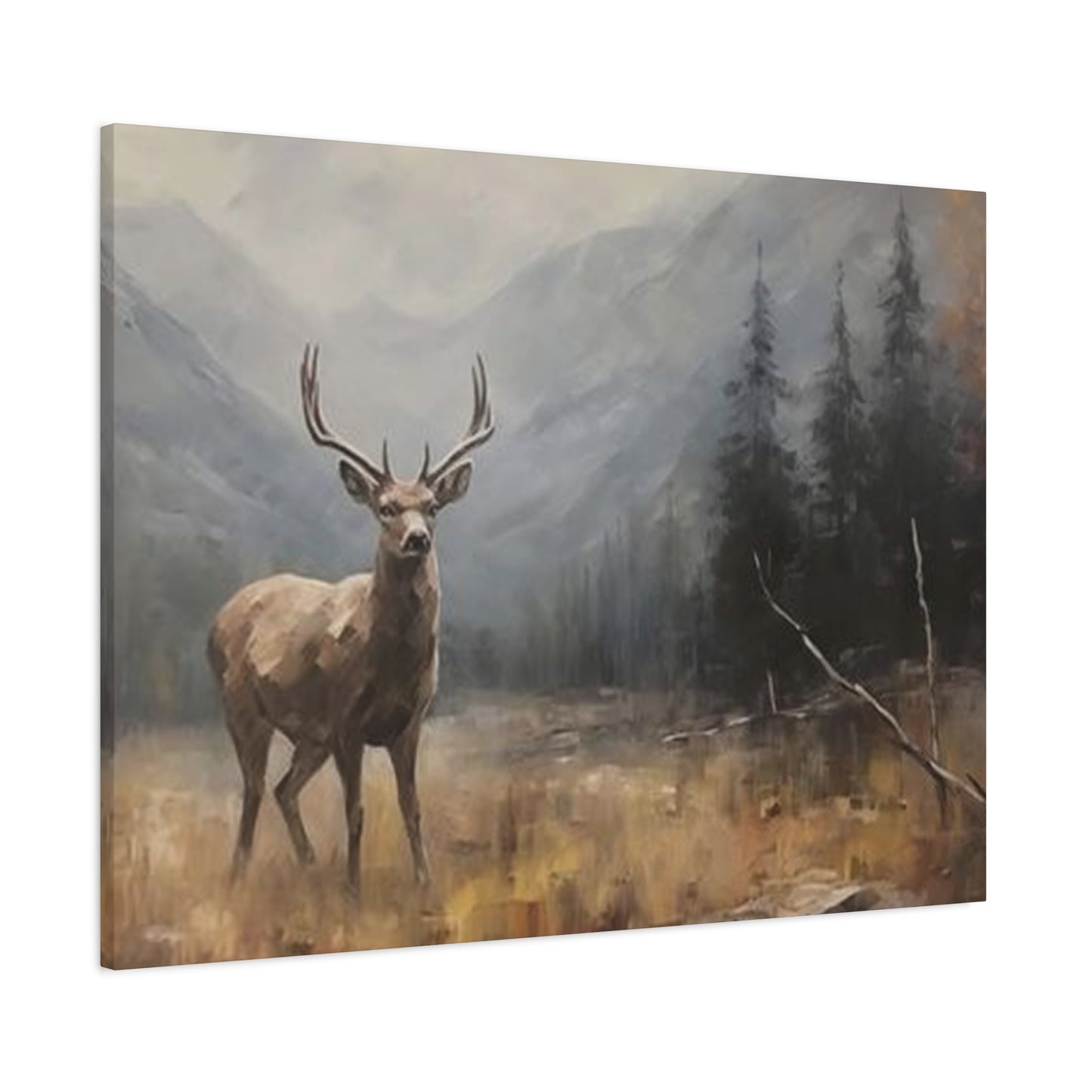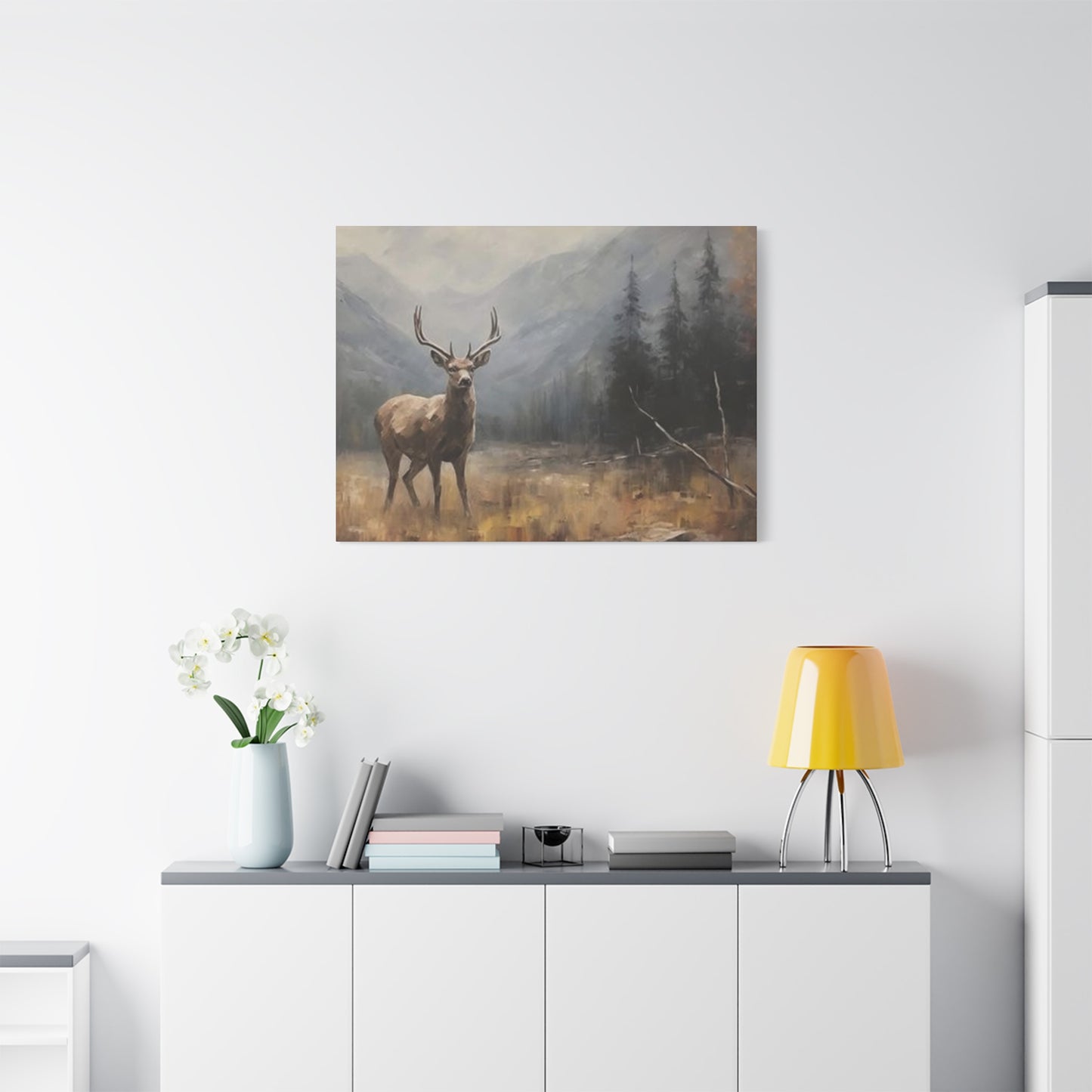Deer Wildlife Wall Art: Bringing Nature's Majesty Into Your Home
Deer wildlife wall art represents one of the most captivating ways to connect with nature while enhancing your living environment. The allure of deer imagery extends far beyond simple decoration. These artworks serve as windows into untamed landscapes, reminding us of peaceful forest mornings and the quiet majesty of woodland creatures. Whether you're drawn to realistic portrayals that showcase every detail of antler structure and coat patterns, or prefer stylized interpretations that capture the essence of these noble animals through bold colors and abstract forms, deer wildlife wall art offers something for every aesthetic preference and home style.
Selecting Your Ideal Deer Wildlife Canvas
When embarking on the journey to select the perfect deer wildlife canvas, numerous factors come into play that will determine how well the artwork integrates with your existing decor and personal taste. The selection process involves careful consideration of artistic style, color schemes, sizing, and the emotional response you want to evoke in your living environment.
The first consideration when choosing deer wildlife canvas artwork involves understanding the various artistic approaches available in today's market. Realistic depictions showcase the intricate details of deer anatomy, from the velvet texture of antlers during growth periods to the seasonal changes in coat coloration. These pieces often feature woodland settings that provide context for the animals, creating complete ecosystem representations that transport viewers into natural habitats.
Photographic-style canvases offer another dimension to deer wildlife art, capturing actual moments in time when these creatures were observed in their natural environment. These pieces carry the authenticity of real encounters, preserving fleeting moments when deer graze peacefully in meadows or bound gracefully through forest clearings. The emotional impact of such pieces often resonates strongly with nature enthusiasts who appreciate the documentary aspect of wildlife photography transformed into lasting artwork.
Contemporary interpretations of deer imagery push creative boundaries by incorporating modern artistic techniques and unconventional color palettes. These pieces might feature deer silhouettes rendered in metallic tones against abstract backgrounds, or incorporate geometric elements that blend natural forms with modern design sensibilities. Such artwork appeals to those who want to celebrate wildlife while maintaining a contemporary aesthetic throughout their living environment.
The medium selection process extends beyond simple visual appeal to encompass practical considerations such as durability and maintenance requirements. High-quality canvas prints offer excellent longevity when properly cared for, maintaining their vibrant colors and sharp details for decades. The texture of canvas adds depth to deer imagery, creating subtle shadows and highlights that enhance the three-dimensional quality of the artwork.
Size considerations play a crucial role in determining the visual impact and placement options for your chosen piece. Large-scale deer canvases create dramatic focal points that can anchor entire room designs, while smaller pieces offer flexibility in grouping arrangements and can complement existing artwork collections. The proportional relationship between artwork size and wall dimensions affects the overall balance and visual harmony of your living environment.
Color harmony between your chosen deer artwork and existing room elements ensures seamless integration that enhances rather than disrupts your established aesthetic. Earth tones naturally present in deer imagery often complement warm wood finishes, stone elements, and neutral color schemes commonly found in homes inspired by natural themes. However, boldly colored interpretations can serve as striking accent pieces that energize neutral environments.
The emotional resonance of your chosen piece should align with the atmosphere you want to create in your living environment. Peaceful grazing scenes evoke tranquility and contemplation, while dynamic action shots of leaping deer generate energy and movement. Consider how different deer poses and expressions will contribute to the daily experience of inhabiting your decorated rooms.
Frame compatibility extends the selection process to include complementary elements that enhance and protect your chosen artwork. The frame style should harmonize with both the artistic content and your room's aesthetic theme, whether that involves rustic wood finishes that echo forest environments or sleek modern frames that emphasize contemporary interpretations of wildlife imagery.
How Deer Paintings Capture Wildlife Beauty
The artistic representation of deer in painted form demonstrates the remarkable ability of human creativity to distill natural beauty into lasting visual experiences. Through various painting techniques, artists transform their observations and emotional connections with these graceful creatures into artworks that preserve and celebrate the essence of wildlife encounters.
Traditional oil painting techniques allow artists to build layers of color and texture that replicate the complex interplay of light and shadow found in natural deer habitats. The slow-drying properties of oil paints enable artists to blend colors seamlessly, creating the subtle gradations found in deer coat patterns and the atmospheric effects of forest lighting. These techniques produce artworks with remarkable depth and richness that continue to reveal new details upon repeated viewing.
Watercolor interpretations of deer imagery capture the ethereal quality of forest encounters through transparent layers and flowing color transitions. The unpredictable nature of watercolor medium mirrors the spontaneous quality of wildlife sightings, creating artworks that feel fresh and alive. These paintings often emphasize the delicate aspects of deer anatomy, such as the graceful curve of necks and the gentle expression in their eyes.
Acrylic painting techniques offer artists the flexibility to work quickly while maintaining vibrant color intensity. This medium excels in capturing the dynamic aspects of deer behavior, from the explosive energy of startled leaps to the alert posture of deer sensing potential threats. Acrylic paintings can achieve both photorealistic detail and bold stylistic interpretations depending on the artist's approach and intended emotional impact.
The composition choices made by deer artists significantly influence how viewers experience and interpret the artwork. Central positioning of deer figures creates intimate portraits that emphasize individual character and personality traits. Off-center compositions that include environmental elements provide context and narrative depth, suggesting stories about the deer's relationship with their habitat and daily activities.
Lighting effects in deer paintings serve multiple purposes beyond simple illumination. Golden hour lighting creates warm, nostalgic moods that evoke peaceful encounters with wildlife. Dramatic backlighting transforms deer into silhouetted forms that emphasize their graceful outlines against luminous backgrounds. Filtered forest light creates dappled patterns that add visual interest while demonstrating the complex interplay between deer and their woodland environments.
Color selection in deer artwork extends far beyond realistic representation to encompass emotional and symbolic meanings. Warm earth tones connect viewers with the natural world while creating cozy, welcoming atmospheres in home environments. Cool blues and greens evoke the mystery and depth of forest shadows. Artists often employ unexpected color choices to create contemporary interpretations that challenge traditional wildlife art conventions.
Texture representation in deer paintings demonstrates artistic skill while adding tactile qualities that engage viewers' imagination. The careful rendering of antler textures, from smooth polished surfaces to rough velvet coverings, provides educational value while showcasing artistic technique. Coat texture variations, from sleek summer fur to thick winter coats, connect viewers with seasonal cycles and natural adaptation processes.
Background elements in deer paintings contribute significantly to the overall narrative and emotional impact of the artwork. Detailed forest scenes create immersive environments that transport viewers into wildlife habitats. Minimalist backgrounds focus attention on deer subjects while allowing viewer imagination to fill in environmental details. Abstract backgrounds create contemporary interpretations that emphasize artistic interpretation over documentary representation.
The scale relationships within deer paintings affect viewer perception and emotional response. Life-size or larger deer representations create powerful, immediate impacts that can make viewers feel they're encountering actual wildlife. Smaller-scale figures within expansive landscapes emphasize the deer's relationship with their environment while creating contemplative, peaceful moods suitable for relaxation areas.
Seasonal representations in deer artwork capture the cyclical nature of wildlife experiences while providing decorative options that can complement changing home decor themes throughout the year. Spring paintings featuring does with fawns celebrate renewal and family bonds. Summer scenes showcase deer in lush, green environments. Autumn artwork captures the dramatic beauty of rutting season and fall colors. Winter paintings demonstrate survival themes and stark beauty of snow-covered landscapes.
Large vs. Small Deer Wildlife Wall Art
The decision between large and small deer wildlife wall art significantly impacts both the visual dynamics of your living environment and the practical aspects of artwork integration. Each size category offers distinct advantages and serves different decorative purposes, requiring careful consideration of your available wall area, existing decor, and desired aesthetic outcomes.
Large-scale deer artwork commands immediate attention and serves as a powerful focal point that can anchor entire room designs. These substantial pieces, typically measuring three feet or larger in any dimension, possess the visual weight necessary to balance large furniture pieces and expansive wall areas. The commanding presence of large deer artwork creates dramatic statements that can transform ordinary rooms into galleries celebrating wildlife beauty.
The immersive quality of large deer artwork allows viewers to appreciate fine details that might be lost in smaller representations. Individual hair textures become visible, antler surface variations gain prominence, and subtle color gradations create depth and realism that draws observers into intimate wildlife encounters. This level of detail appreciation enhances the educational value of the artwork while providing ongoing visual discovery opportunities.
Room proportions play a crucial role in determining the effectiveness of large deer artwork installations. High ceilings and expansive wall areas accommodate oversized pieces without creating overwhelming visual pressure. The breathing room provided by substantial wall dimensions allows large artwork to exist comfortably within the architectural framework while maintaining proper visual balance with surrounding elements.
Large deer artwork serves multiple decorative functions beyond simple wall coverage. These pieces can define conversation areas within open floor plans, create visual barriers that suggest room divisions, and establish thematic directions that influence subsequent decorating decisions. The substantial visual presence of large artwork often reduces the need for additional wall decorations, simplifying room aesthetics while maintaining visual interest.
The investment aspect of large deer artwork often represents a significant financial commitment that requires long-term planning and careful selection. However, the lasting impact and statement-making power of substantial pieces often justify higher costs through their ability to transform living environments and provide ongoing enjoyment. Quality large-scale artwork often appreciates in value over time, particularly when created by recognized artists or featuring exceptional craftsmanship.
Small deer artwork offers flexibility and versatility that large pieces cannot match. These compact compositions, typically measuring under two feet in any dimension, can be easily relocated, regrouped, and integrated into changing decorative schemes. The modest scale of small deer artwork makes it accessible for various budget ranges while still providing the aesthetic benefits of wildlife imagery.
Gallery wall compositions benefit tremendously from small deer artwork pieces that can be combined with complementary nature themes, family photographs, and other personal meaningful items. The ability to create custom groupings allows for personalized storytelling through visual arrangements that reflect individual interests and experiences. Small pieces can be added to existing collections over time, allowing for gradual evolution of wall displays.
Intimate viewing experiences characterize small deer artwork, encouraging close observation and personal connection with the imagery. These pieces work particularly well in private areas such as bedrooms, studies, and reading nooks where quiet contemplation enhances the artwork appreciation experience. The personal scale creates cozy, welcoming atmospheres that large pieces might overwhelm.
Budget considerations often favor small deer artwork for those beginning their wildlife art collections or decorating multiple rooms. The lower individual cost of small pieces allows for experimentation with different artists, styles, and subjects without major financial commitments. This accessibility enables broader exploration of deer artwork possibilities while building appreciation for wildlife art genres.
Seasonal rotation becomes practical with small deer artwork collections, allowing for fresh decorative approaches that reflect changing weather, holidays, or personal moods. Storage requirements for small pieces remain manageable, making it feasible to maintain larger collections that provide decorative variety throughout the year. This flexibility supports dynamic decorating approaches that keep living environments feeling fresh and engaging.
Mixed-size arrangements combining large and small deer artwork create sophisticated wall displays that balance visual weight while providing varied viewing experiences. Large anchor pieces establish thematic foundations while smaller complementary works add detail and interest. These layered approaches demonstrate advanced decorating skills while maximizing the impact of available artwork collections.
Placement flexibility distinguishes small deer artwork from larger counterparts, enabling decoration of areas where substantial pieces would be impractical. Narrow wall segments, areas between windows, and small alcoves can accommodate modest deer artwork that might otherwise remain bare. This adaptability ensures that wildlife themes can be extended throughout home environments regardless of architectural limitations.
The psychological impact of artwork size affects viewer experience and emotional response. Large deer pieces create impressive, sometimes overwhelming experiences that command respect and attention. Small pieces invite intimate connection and personal reflection, fostering gentler emotional responses that support relaxation and contemplation. Understanding these effects helps in selecting appropriate sizes for different room functions and desired atmospheres.
Framing Ideas for Deer Wildlife Paintings
The framing of deer wildlife paintings represents a crucial design decision that significantly impacts both the preservation of artwork and its integration with surrounding decor. Proper frame selection enhances the visual appeal of deer imagery while providing necessary protection against environmental factors that could damage the artwork over time.
Traditional wood framing options offer natural harmony with deer wildlife themes, creating cohesive visual connections between artwork content and presentation materials. Rich walnut frames provide elegant, sophisticated borders that complement both realistic and stylized deer representations. The deep brown tones of walnut naturally echo forest environments while adding luxurious touches that elevate artwork presentations. Oak framing delivers durability and classic appeal with grain patterns that suggest tree bark textures, reinforcing the natural themes present in deer imagery.
Rustic wood framing approaches emphasize the wilderness connection inherent in deer wildlife art through deliberate imperfections and weathered appearances. Barnwood frames bring authentic aged character that suggests outdoor environments and rural settings. The varied coloration and texture irregularities found in reclaimed wood create visual interest while supporting authentic country or cabin decor themes. These frames work particularly well with deer artwork that emphasizes natural habitats and outdoor adventures.
Pine and cedar framing options provide lighter wood tones that complement deer artwork without overwhelming subtle color palettes. The pale golden hues of pine frames create bright, cheerful presentations suitable for contemporary home environments. Cedar frames contribute natural aromatic qualities along with attractive reddish tones that warm up deer imagery while providing moth-repelling properties that help protect artwork from insect damage.
Metal framing alternatives offer sleek, modern presentations that can transform traditional deer wildlife imagery into contemporary art statements. Brushed aluminum frames provide neutral metallic tones that won't compete with artwork colors while adding sophisticated industrial touches. Black metal frames create dramatic borders that intensify deer imagery through high contrast effects, making artwork appear more vivid and dynamic.
Bronze and copper metal frames bring warm metallic tones that complement earth-colored deer artwork while adding luxurious finishing touches. These materials develop natural patinas over time, creating evolving presentations that mirror the seasonal changes depicted in many deer paintings. The richness of bronze and copper framing elevates deer artwork into gallery-quality presentations suitable for formal living areas.
Custom matting options expand framing possibilities while providing additional protection for deer artwork. Neutral cream and beige mats create breathing room around deer images while maintaining natural color harmony. The subtle warmth of cream matting enhances earth tones commonly found in deer artwork without introducing competing visual elements. Multiple mat layers add dimensional depth that creates shadow lines and visual interest around artwork borders.
Colored matting approaches can either harmonize with or intentionally contrast with deer artwork colors to achieve specific decorative effects. Deep green mats echo forest environments while creating rich, sophisticated presentations. Warm brown mats reinforce natural themes while providing rich background colors that make deer imagery appear more luminous. Unexpected mat colors, such as deep blues or burgundies, create contemporary presentations that challenge traditional wildlife art conventions.
Glass and acrylic covering options provide essential protection against dust, moisture, and ultraviolet light damage while affecting artwork visibility and reflection characteristics. Standard clear glass offers excellent clarity at economical prices but can create reflection problems in certain lighting conditions. Non-reflective glass eliminates glare issues but may slightly reduce color vibrancy and detail sharpness. Museum-quality glass provides optimal protection and clarity but represents a significant investment in artwork preservation.
Acrylic glazing materials offer lightweight alternatives to glass while providing excellent clarity and impact resistance. These synthetic materials won't shatter if accidentally struck, making them safer choices for high-traffic areas or homes with children. The lighter weight of acrylic glazing reduces stress on wall hanging systems while maintaining excellent protective qualities.
Shadow box framing techniques create three-dimensional presentations that add dramatic depth to deer wildlife artwork. The extended depth provided by shadow boxes allows for creative lighting effects that emphasize artwork textures and details. These specialized frames work particularly well with mixed-media deer art that incorporates dimensional elements or for displaying deer artwork alongside related collectibles such as shed antlers or nature specimens.
Floating frame presentations suspend deer artwork within frame boundaries without direct contact, creating modern, gallery-style displays that emphasize artistic content over framing elements. These minimalist approaches work well with contemporary deer interpretations while allowing artwork colors and compositions to dominate visual attention. Floating frames often incorporate hidden mounting systems that create the illusion of artwork suspension within frame boundaries.
Frame size relationships significantly affect artwork presentation and room integration. Frames that closely border artwork create intimate, focused presentations while extensive matting and wider frames create more formal, gallery-style displays. The proportional relationship between frame width and artwork dimensions affects visual weight and integration with surrounding decor elements. Oversized frames can transform modest deer artwork into statement pieces while narrow frames maintain focus on artistic content.
Conservation framing techniques ensure long-term artwork preservation through acid-free materials and proper mounting methods. These professional approaches prevent chemical interactions that could discolor or damage deer artwork over time. Conservation mounting systems allow for artwork expansion and contraction due to environmental changes while preventing stress damage to canvas or paper substrates. While conservation framing represents higher initial costs, it provides essential protection for valuable or meaningful deer artwork pieces.
Symbolism of Deer in Wildlife Art
The symbolic significance of deer in wildlife art extends far beyond their natural beauty, encompassing deep cultural meanings and spiritual associations that have developed across diverse civilizations throughout human history. These graceful creatures serve as powerful metaphors for various human experiences and aspirations, making deer wildlife wall art particularly meaningful for those seeking to incorporate symbolic elements into their living environments.
Deer symbolism frequently represents gentleness and peaceful coexistence with natural environments. Their non-aggressive nature and graceful movements have made them universal symbols of harmony and tranquility. When incorporated into home decor through wildlife art, deer imagery can create calming atmospheres that encourage relaxation and stress reduction. The peaceful associations with deer make their artistic representations particularly suitable for bedrooms, meditation areas, and other locations where serenity is desired.
The regenerative qualities of deer antlers have established these animals as symbols of renewal and growth. Male deer shed and regrow their antlers annually, creating powerful metaphors for personal transformation and the ability to overcome challenges. Deer artwork featuring prominent antler displays can serve as daily reminders of resilience and the potential for positive change, making such pieces meaningful additions to home offices or personal reflection areas.
Spiritual traditions across many cultures have attributed mystical qualities to deer encounters. Native American traditions often view deer as messengers between physical and spiritual realms, capable of providing guidance during important life transitions. Celtic mythology associates deer with forest gods and supernatural wisdom. These spiritual connections imbue deer artwork with deeper significance beyond aesthetic appeal, creating opportunities for personal reflection and meditation.
The alertness and keen senses of deer have established them as symbols of awareness and intuition. Their ability to detect subtle environmental changes and respond quickly to potential threats represents heightened consciousness and mindful living. Deer artwork can serve as reminders to remain present and attentive to life's subtle signs and opportunities, making such pieces particularly meaningful for those pursuing personal growth and mindfulness practices.
Maternal symbolism emerges strongly in deer imagery featuring does with fawns, representing nurturing care and protective instincts. These compositions celebrate family bonds and the dedication required for raising young, making them especially meaningful for parents or those hoping to start families. The tender interactions depicted in mother-and-fawn artwork create emotional connections that resonate with human experiences of love and protection.
Seasonal symbolism associated with deer reflects their adaptation to natural cycles and environmental changes. Spring deer imagery celebrates new beginnings and fertility, while autumn scenes capture themes of preparation and wisdom gained through experience. Winter deer representations emphasize survival skills and perseverance through difficult periods. This seasonal symbolism allows deer artwork to reflect personal life phases and provide inspiration for navigating various challenges.
The grace and elegance of deer movements have made them symbols of refined beauty and natural aristocracy. Their poised bearing and fluid motion represent ideals of dignity and self-possession that many people aspire to embody. Deer artwork can serve as daily inspiration for maintaining composure and grace under pressure, making such pieces valuable additions to professional or social areas within homes.
Forest dwelling associations connect deer symbolism with themes of natural wisdom and environmental stewardship. As creatures that thrive in woodland environments, deer represent successful adaptation to natural systems and sustainable living practices. Their presence in artwork can reinforce commitments to environmental consciousness and remind viewers of humanity's connection to natural ecosystems.
The solitary nature of many deer species, particularly males outside of mating season, has established them as symbols of independence and self-reliance. Lone deer imagery can represent personal strength and the ability to thrive without constant external support. These symbolic associations make solo deer artwork particularly meaningful for individuals embracing independence or navigating periods of personal growth.
Vulnerability symbolism emerges from deer's position as prey animals in natural ecosystems. Their need for constant vigilance and quick escape responses represents the delicate nature of life and the importance of protecting what is precious. This vulnerability symbolism can create empathy and compassion, making deer artwork suitable for those seeking to cultivate gentleness and understanding in their daily lives.
The crossing of paths with deer in natural settings often carries symbolic significance related to unexpected encounters and divine timing. Many cultures interpret deer sightings as signs of good fortune or indications that important life events are approaching. Artwork depicting deer can serve as reminders to remain open to unexpected opportunities and trust in life's natural timing.
Deer symbolism in relationship contexts often represents loyalty and devotion, particularly in species that mate for life or demonstrate strong family bonds. These associations make deer artwork meaningful gifts for anniversaries, weddings, or other celebrations of committed relationships. The faithful nature attributed to deer can reinforce values of dedication and partnership in home environments.
The boundary-crossing abilities of deer, which easily navigate between different terrains and environments, symbolize adaptability and versatility. Their comfort in various habitats represents the ability to thrive in changing circumstances while maintaining essential personal characteristics. This symbolism makes deer artwork particularly relevant for those experiencing life transitions or seeking to develop greater flexibility in their approaches to challenges.
Mixing Deer Wildlife Prints with Nature Themes
The integration of deer wildlife prints with broader nature themes creates cohesive decorating schemes that celebrate the interconnectedness of natural ecosystems while establishing harmonious visual relationships throughout living environments. This approach allows for sophisticated decorating strategies that extend beyond single-subject focus to embrace comprehensive nature-inspired aesthetics.
Forest landscape artwork provides natural companions for deer prints, creating environmental contexts that suggest complete habitat representations. Woodland scenes featuring towering trees, filtered sunlight, and forest floor details establish settings where deer imagery feels naturally at home. These landscape pieces can serve as backdrop elements that enhance deer artwork while providing broader visual interest and depth to wall arrangements.
Tree-focused artwork, particularly pieces featuring oak, maple, and pine specimens, creates vertical elements that complement horizontal deer compositions while reinforcing woodland themes. The various seasonal states of trees, from spring budding to autumn color displays, provide opportunities for dynamic arrangements that can be refreshed throughout the year. Ancient tree portraits suggest timeless natural wisdom that harmonizes with deer symbolism.
Floral elements native to deer habitats enhance nature theme integration while adding color variety and seasonal interest to artwork arrangements. Wildflower prints featuring species such as trilliums, bloodroot, and wild columbine create delicate accent pieces that balance the more substantial presence of deer imagery. These botanical elements introduce feminine softness that complements the often masculine energy of antlered deer representations.
Bird artwork creates dynamic movement elements that contrast beautifully with the more grounded presence of deer imagery. Species that share deer habitats, such as cardinals, blue jays, and wood ducks, provide authentic ecological connections while introducing vibrant colors and different compositional elements. The vertical flight patterns of birds create visual movement that complements the horizontal grazing or walking poses common in deer artwork.
Stream and water feature prints establish environmental elements essential to deer habitat while introducing reflective surfaces and fluid movement into nature-themed arrangements. Babbling brook imagery suggests the peaceful sounds of natural environments while providing curved compositional lines that soften angular artwork arrangements. Pond and lake scenes create contemplative focal points that enhance the meditative qualities associated with deer symbolism.
Rock formation and geological feature artwork provides structural foundation elements that ground nature-themed arrangements while suggesting the enduring qualities of natural environments. Mountain scenes create dramatic backgrounds for deer imagery while introducing grandeur and scale that elevates overall compositional impact. Stone and boulder studies add textural variety while reinforcing natural material themes.
Seasonal progression arrangements utilize multiple nature prints to create dynamic displays that reflect annual cycles. Spring compositions might combine deer fawn imagery with budding tree branches and early wildflowers. Summer arrangements feature mature deer in lush green settings with full foliage and blooming plants. Autumn displays showcase deer in preparation for winter alongside colorful fall leaves and harvest themes. Winter compositions emphasize survival themes with deer in snow-covered landscapes accompanied by bare tree branches and evergreen elements.
Weather phenomenon artwork adds atmospheric drama to nature-themed arrangements while creating mood variations that complement different deer behavioral representations. Misty morning scenes enhance peaceful grazing deer imagery while adding mystery and depth. Storm approach artwork creates tension that complements alert deer poses. Sunset and sunrise pieces provide warm lighting effects that enhance the golden tones often found in deer coat coloration.
Insect and small wildlife prints introduce ecological detail and scientific interest to comprehensive nature displays. Butterfly collections suggest pollination themes and delicate beauty while providing color accents. Bee imagery reinforces environmental stewardship themes while adding geometric pattern elements. Small mammal prints featuring squirrels, rabbits, or chipmunks create community feeling that suggests thriving natural ecosystems.
Natural pattern artwork derived from organic sources creates abstract elements that bridge realistic nature imagery with contemporary design sensibilities. Tree ring patterns, leaf vein structures, and crystal formations provide geometric interest while maintaining natural connections. These pattern elements can serve as transitional pieces that help integrate nature themes with modern decorating approaches.
Conservation theme artwork reinforces environmental awareness messages while providing educational elements that enhance the meaningful impact of nature-themed arrangements. Endangered species prints raise awareness while creating emotional connections. Habitat preservation imagery suggests stewardship responsibilities. Climate change impact representations provide contemporary relevance while encouraging environmental consciousness.
Scale relationships within nature-themed groupings require careful consideration to maintain visual balance while creating realistic ecosystem representations. Large landscape pieces establish environmental contexts while smaller detailed studies provide intimate viewing opportunities. The progression from broad landscape views to specific natural details creates layered visual experiences that reward both distant viewing and close examination.
Color harmony coordination ensures that diverse nature elements work together cohesively rather than creating chaotic visual competition. Earth tone palettes naturally harmonize most nature imagery while providing warm, welcoming atmospheres. Seasonal color progressions create dynamic possibilities for rotating displays. Accent color introductions through flowering plants or colorful birds provide visual excitement while maintaining natural authenticity.
Textural variety enhancement through mixed media approaches adds dimensional interest to nature-themed arrangements. Canvas prints provide substantial presence while photographic prints offer detailed clarity. Watercolor reproductions introduce soft, flowing qualities while pen-and-ink drawings provide precise detail emphasis. These varied approaches create rich visual textures that enhance overall decorative impact.
Popular Artists Known for Deer Wildlife Paintings
The world of deer wildlife art has been enriched by numerous talented artists whose distinctive styles and approaches have shaped how these magnificent creatures are represented in contemporary and traditional artwork. Understanding the contributions of notable deer artists provides insight into various artistic movements while helping art collectors identify works that align with their aesthetic preferences and investment goals.
Robert Bateman stands among the most celebrated wildlife artists of the modern era, with deer imagery representing a significant portion of his extensive portfolio. His meticulous attention to anatomical detail and environmental accuracy has established new standards for realistic wildlife representation. Bateman's deer paintings demonstrate masterful understanding of animal behavior and habitat relationships, creating artworks that serve both aesthetic and educational purposes. His ability to capture the subtle interactions between deer and their forest environments has influenced countless contemporary wildlife artists.
Carl Brenders brings European artistic traditions to North American wildlife subjects, including numerous deer compositions that showcase his exceptional technical skill and artistic vision. His paintings demonstrate remarkable attention to fur texture, antler detail, and environmental elements that create almost photographic realism. Brenders' work appeals to collectors seeking museum-quality artwork that will maintain value while providing daily viewing pleasure. His deer paintings often feature dramatic lighting effects that transform ordinary wildlife encounters into extraordinary artistic experiences.
Terry Isaac has developed a distinctive style that combines precise botanical accuracy with wildlife representation, creating deer artwork that showcases both animal subjects and their plant environment relationships. His detailed approach to depicting deer feeding behaviors provides educational value while maintaining high artistic standards. Isaac's work demonstrates how scientific observation can enhance artistic interpretation without sacrificing emotional impact or visual appeal.
Nancy Glazier specializes in capturing the gentle, spiritual qualities of deer through her sensitive artistic interpretations. Her work often emphasizes the peaceful aspects of deer behavior while showcasing the artist's skill in rendering soft fur textures and gentle facial expressions. Glazier's deer paintings appeal particularly to collectors seeking artwork that conveys tranquility and natural harmony. Her ability to capture the maternal qualities displayed by does with fawns has made her work especially popular among art enthusiasts.
Daniel Smith brings dynamic energy to deer representation through compositions that capture movement and alert behavior patterns. His paintings often feature deer in action poses that suggest awareness and readiness to flee, creating artwork with inherent tension and excitement. Smith's technical skill in rendering anatomy in motion has established him as a sought-after artist among collectors who appreciate both artistic excellence and behavioral accuracy in wildlife art.
Michael Coleman focuses on the majestic qualities of deer, particularly mature males during rutting season. His paintings emphasize the power and dignity of these creatures while showcasing impressive antler development and muscular definition. Coleman's work appeals to collectors seeking artwork that captures the more dramatic aspects of deer behavior and physical characteristics. His ability to convey personality through deer facial expressions adds emotional depth to his technically excellent paintings.
Hayden Lambson represents a younger generation of deer artists who combine traditional painting skills with contemporary artistic sensibilities. His work often features innovative compositional approaches and lighting effects that create fresh perspectives on familiar subjects. Lambson's deer paintings demonstrate how traditional wildlife art can evolve while maintaining connection to natural observation and artistic excellence.
Dino Paravano brings impressionistic influences to deer artwork, creating paintings that emphasize mood and atmosphere over detailed representation. His loose brushwork and emphasis on lighting effects create deer imagery that focuses on emotional impact rather than documentary accuracy. Paravano's approach appeals to collectors seeking artwork that captures the feeling of wildlife encounters rather than precise anatomical representation.
Greg Olsen incorporates spiritual themes into his deer artwork, creating pieces that suggest deeper meanings and connections between humans and wildlife. His paintings often feature symbolic elements and lighting effects that elevate deer imagery beyond simple animal representation. Olsen's work appeals to collectors seeking artwork with inspirational or spiritual significance that can provide daily meditation opportunities.
Tom Hirata demonstrates exceptional skill in capturing deer in winter environments, showcasing how these animals adapt to challenging seasonal conditions. His paintings often feature snow-covered landscapes that emphasize survival themes while highlighting the beauty of deer against stark winter backgrounds. Hirata's technical skill in rendering both animal subjects and environmental elements has established him as a master of winter wildlife scenes.
Kevin Daniel combines deer imagery with landscape painting expertise to create comprehensive habitat representations. His work demonstrates understanding of ecological relationships while providing visually stunning artwork suitable for both casual viewing and serious art collection. Daniel's ability to integrate deer subjects seamlessly into landscape compositions creates harmonious artwork that celebrates natural ecosystem balance.
Linda Picken specializes in intimate deer portraits that emphasize individual personality and character traits. Her close-up compositions reveal subtle details of deer facial expressions and eye characteristics that create emotional connections between artwork and viewers. Picken's work appeals to those seeking deer art that focuses on the gentler aspects of these creatures while demonstrating exceptional painting technique.
Contemporary digital artists have also made significant contributions to deer wildlife art through innovative techniques that blend traditional observation with modern technology. These artists often create artwork that can be reproduced affordably while maintaining high quality standards, making deer art accessible to broader audiences. Digital approaches allow for creative color manipulations and compositional experiments that expand traditional deer art boundaries.
Regional artists often bring unique perspectives to deer representation based on local subspecies and habitat characteristics. These artists provide authentic regional interpretations that reflect specific geographic areas and cultural relationships with deer populations. Supporting regional deer artists helps preserve local artistic traditions while building meaningful connections between art and place.
Abstract Deer Wildlife Painting Styles
Abstract interpretations of deer wildlife subjects represent an exciting artistic frontier that challenges traditional representational approaches while maintaining connection to natural inspiration. These innovative styles allow artists to explore emotional and symbolic aspects of deer imagery through non-literal visual languages that emphasize color, form, and composition over detailed anatomical accuracy.
Geometric abstraction approaches deconstruct deer forms into angular components that suggest animal shapes through carefully arranged triangular, rectangular, and linear elements. These compositions often emphasize the graceful curves of deer necks and the branching patterns of antlers through simplified geometric interpretations. Color blocking techniques within geometric frameworks create modern deer imagery that complements contemporary home decor while retaining recognizable animal characteristics.
Cubist influences in deer artwork fragment natural forms into multiple perspective views presented simultaneously within single compositions. This approach allows artists to show various aspects of deer anatomy and movement patterns that would be impossible in traditional representational art. The analytical nature of cubist deer art appeals to viewers who appreciate intellectual challenges while maintaining aesthetic appeal through sophisticated color relationships and compositional balance.
Expressionistic deer artwork emphasizes emotional content over visual accuracy, using bold color choices and energetic brushwork to convey feelings associated with deer encounters rather than literal appearance. These paintings often feature exaggerated proportions and unexpected color combinations that create powerful emotional impacts. The spontaneous quality of expressionistic brushwork captures the vital energy and alertness characteristic of deer behavior.
Color field abstractions use deer forms as starting points for explorations of pure color relationships and atmospheric effects. These paintings often dissolve deer shapes into flowing color transitions that suggest natural environments and seasonal changes. The meditative quality of color field deer art creates peaceful viewing experiences while maintaining subtle connections to wildlife inspiration through organic shape suggestions and natural color harmonies.
Minimalist deer representations reduce animal forms to their essential elements, creating powerful visual statements through elegant simplicity. These artworks often feature single curved lines that suggest deer silhouettes or simple color blocks that imply presence without detailed description. The restraint demonstrated in minimalist deer art appeals to viewers seeking sophisticated decor that doesn't overwhelm living environments while maintaining meaningful natural connections.
Surrealistic deer imagery combines realistic animal representation with dreamlike elements and impossible scenarios that explore psychological and symbolic meanings. These paintings might feature deer with elaborate floral antlers, floating through cloudy skies, or inhabiting fantastical landscapes that exist only in artistic imagination. Surrealistic approaches allow for personal interpretation while creating conversation-worthy artwork that rewards repeated viewing.
Abstract impressionistic deer paintings capture the fleeting essence of wildlife encounters through loose brushwork and emphasis on lighting effects rather than detailed form description. These artworks suggest deer presence through color suggestions and energetic mark-making that conveys movement and atmosphere. The spontaneous quality of abstract impressionism creates deer art that feels alive and dynamic while maintaining artistic sophistication.
Textural abstraction explores deer subjects through emphasis on surface qualities and material characteristics rather than representational accuracy. These artworks might incorporate actual natural materials such as leaves, bark, or sand mixed with traditional painting media to create tactile surfaces that suggest deer habitat environments. Heavy impasto techniques create dimensional surfaces that play with light and shadow effects.
Digital abstraction opens new possibilities for deer art through computer-generated imagery and manipulation techniques that would be impossible with traditional media. These artworks can incorporate photographic elements combined with digital painting techniques to create hybrid images that blend reality with artistic interpretation. The precision possible through digital techniques allows for complex pattern overlays and color manipulations that expand abstract expression possibilities.
Fluid art techniques applied to deer subjects create organic, flowing compositions that suggest natural movement and environmental relationships through paint behavior rather than deliberate mark-making. These artworks often feature deer silhouettes emerging from or dissolving into flowing color fields created through paint pouring and manipulation techniques. The unpredictable nature of fluid art mirrors the spontse magnificent creatures, symbols of grace and wilderness, have inspired countless artists to create stunning visual representations that capture their ethereal beauty and natural elegance. From traditional oil paintings to modern digital prints, deer artwork offers homeowners an opportunity to bring the serenity and wonder of the forest into their daily lives.
Conclusion
Deer Wildlife Wall Art captures the majestic beauty and serene presence of one of nature’s most graceful creatures, bringing an element of the wilderness directly into your living space. These artworks celebrate the delicate balance of strength and gentleness embodied by deer, creating a visual narrative that resonates deeply with nature lovers and art enthusiasts alike. By showcasing these animals in their natural habitat, the art fosters a profound connection to the outdoors and the timeless rhythms of wildlife.
What makes Deer Wildlife Wall Art truly special is its ability to evoke both awe and tranquility. Whether depicted in vivid detail or through subtle, artistic interpretation, the imagery highlights the elegance of the deer’s form and the serene environment it inhabits. This duality allows the artwork to serve as both a captivating focal point and a calming presence within your home, enriching any room with a touch of natural grace.
These pieces seamlessly complement a variety of décor styles, from rustic and lodge-inspired interiors to modern, minimalist settings. Their earthy color palettes and organic themes blend effortlessly with natural materials like wood and stone, enhancing a sense of harmony and warmth. Whether displayed in a living room, study, or hallway, Deer Wildlife Wall Art invites reflection and appreciation for the quiet majesty of nature.
Ultimately, Deer Wildlife Wall Art is more than a decorative choice—it’s an homage to the beauty and spirit of wildlife. It provides a timeless, meaningful way to infuse your home with the calming energy of nature, creating an environment that feels both welcoming and inspiring. For those who cherish the outdoors and seek to bring that reverence inside, this wall art offers a powerful visual reminder of nature’s enduring majesty.

















